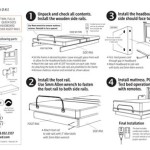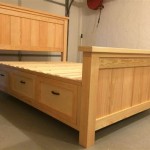Can You Put a Raised Bed on a Slope?
Building raised garden beds on a slope is a creative way to create a productive and attractive growing space in an otherwise challenging area. However, there are some important considerations to keep in mind to ensure the success of your raised bed garden on a slope.
Creating a Level Base
Before you build your raised bed, it's essential to create a level base on the slope. This will ensure that the bed is stable and prevent it from sliding down the incline. To create a level base, you will need to dig into the slope and remove any uneven areas. You may need to use a level to ensure that the base is completely flat before you start building your raised bed.
Retaining Walls
In some cases, you may need to build retaining walls to support the raised bed on a slope. Retaining walls help to hold back the soil on the uphill side of the bed and prevent it from collapsing. Retaining walls can be built using a variety of materials, such as wood, concrete, or stone. The type of material you choose will depend on the size and weight of your raised bed, as well as the slope of the land.
Drainage
Good drainage is essential for a successful raised bed garden, especially on a slope. Water can accumulate at the bottom of the bed and cause the soil to become waterlogged. To avoid this, it's important to provide adequate drainage for your raised bed. This can be done by drilling holes in the bottom of the bed or by installing a drainage layer at the base of the bed. A drainage layer can be made using a variety of materials, such as gravel or crushed rock.
Sunlight
When choosing a location for your raised bed on a slope, it's important to consider the amount of sunlight that the bed will receive. Raised beds on a north-facing slope will receive less sunlight than beds on a south-facing slope. If you're planning to grow vegetables that require a lot of sunlight, it's best to choose a location that receives at least six hours of direct sunlight per day.
Building the Raised Bed
Once you've chosen a location and created a level base, you can start building your raised bed. Raised beds can be built using a variety of materials, such as wood, metal, or concrete. The type of material you choose will depend on your personal preference and budget. Raised beds can be built to any size or shape, so you can customize them to fit your needs and the space available.
Filling the Raised Bed
Once your raised bed is built, you can start filling it with soil. It's important to use a high-quality soil mix that is well-drained and nutrient-rich. You can purchase soil from a garden center or make your own by mixing together compost, topsoil, and sand. Once the raised bed is filled, you can start planting your vegetables or flowers.

How To Build An Organic Raised Bed On A Sloped Yard Deeply Southern Home

How To Build An Organic Raised Bed On A Sloped Yard Deeply Southern Home

Raised Bed Vegetable Garden On A Slope Gardening Healthy Alyona

How To Make Raised Garden Bed In Slope Area Step By Idea For Beginners Gardening Nitha Kitchen

Can You Grow A Raised Bed Garden On Slope Gardening Channel

Raised Bed Vegetable Garden On A Slope Gardening Healthy Alyona

How To Build Raised Garden Beds On A Slope

Raised Bed Vegetable Garden On A Slope Gardening Healthy Alyona

How To Build An Organic Raised Bed On A Sloped Yard Deeply Southern Home

How To Build An Organic Raised Bed On A Sloped Yard Deeply Southern Home







